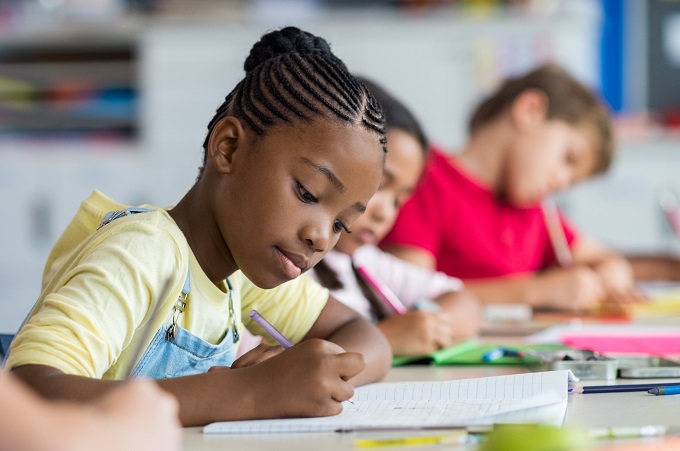
I always look for ways I can apply my passion for literacy to various media. So when I came across Netflix’s series Get Organized With The Home Edit, based on Clea Shearer and Joanna Teplin’s company The Home Edit (THE)—which was started via social media, a fact I love as a professor of new literacies!—I couldn’t stop making connections between each episode I viewed and teaching literacy.
In this blog post, I describe THE method and share how you can apply the tenets of Get Organized With The Home Edit to writing instruction. In a future post, I’ll detail how you can apply the method to your classroom library (in-school or virtual) and digital resource curation.
THE process
Shearer and Teplin articulate three key elements of organization in their Netflix show and first book The Home Edit: edit, assembly, and upkeep.
When they meet clients who need organizational help, they ask them first to edit their material. Clients take everything out of a particular space and create groupings for analysis. Decisions are made about which items to keep and which need to be donated, stored elsewhere, or thrown out.
Then the organizers think about a sustainable organizational scheme that meets form and function. As much as they want a pretty ROYGBIV-colored bookcase, they also want kids to find their books or games more easily. The beautiful labels on bins, baskets, racks, and rotating organizers are aesthetically pleasing, but they also help clients maintain the devised organizational structure.
Then the assembly step comes in. Shearer and Teplin set up the space with their labeled organizational product in ways that are beautiful and that make sense with a room’s function and the flow of activities that will take place there.
The last element in the process is upkeep. Clients’ abilities to sustain the organizational design is essential to maintaining a calming lifestyle in which everything has a place. Shearer and Teplin recommend a one-in, one-out policy; that is, replacing an already-there item with a newly acquired one. They also recommend getting other people involved in the space’s organizational structure.
Applying THE to writing instruction
I was excited when Shearer and Teplin discussed how their organizational process related to the writing of their book:
Organizing a book is no different from organizing a space: You have to take inventory of everything you want in there, clean out what you don’t, sort items by type, identify how to make those items as accessible as possible, and then make the whole thing look nice. (p. 22)
Here are my ideas for applying THE to your writing instruction.
Edit: Invite students to take a piece of writing and highlight (with physical highlighters or in a computer program) like parts in the same colors. For example, if they are writing a piece about dinosaurs, have them highlight information about the time period in which the dinosaurs lived in green, information about their size in pink, information about their diet in blue, and so on. Then have them cut their paper or copy and paste sections so that they can organize like elements into groups. Student writers may also decide about sections to keep or get rid of here.
Assembly: Now that the organizational structure has been determined, students can articulate to you or to their writing group about how their paper sections are organized. They can have meetings with their writing group to make sure that the paper flows in this new organizational structure and to check if any sections need to be shortened or lengthened for balance. Students can then write a new draft of their piece.
Upkeep: Students can meet with you or with their writing group members to discuss how the organizational structure exercise improved their writing and how their peers were able to give them suggestions for their writing. Here is also where I would suggest that you engage students in conversations about how they might use strategies learned in this experience to future writing assignments so that they are reflecting on how they will “upkeep” this writing skill.
[Note: This UNC Writing Center color-coding video inspired my writing tip.]
The next time you find yourself watching Get Organized With The Home Edit, consider how you can apply its ideas not only in your home but also your classroom as well. I would love to see how you’re incorporating THE in your literacy instruction, so feel free to share your ideas with me!
And if you want a few more ideas about how I applied THE method to editing resources, look out for my second blog post in this series coming soon.
Katie Caprino is an assistant professor of pK–12 New Literacies at Elizabethtown College. She teaches and researches in the areas of children’s, middle grade, and young adult literature; technology integration in the literacy classroom; and the teaching of writing and blogs frequently at her blog Katie Reviews Books (katiereviewsbooks.wordpress.com). You can follow her on Twitter @KCapLiteracy.